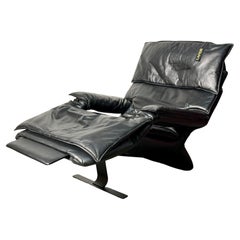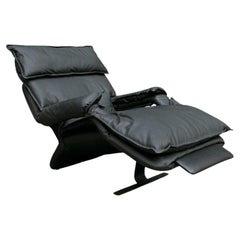Percival Lafer Chair Pony
Vintage 1980s Brazilian Post-Modern Lounge Chairs
Metal
Mid-20th Century Brazilian Mid-Century Modern Lounge Chairs
Metal, Iron
Late 20th Century Brazilian Lounge Chairs
Chrome
People Also Browsed
Mid-20th Century Brazilian Mid-Century Modern Armchairs
Metal
Mid-20th Century Brazilian Mid-Century Modern Sofas
Suede, Fiberglass
2010s Mexican Brutalist Contemporary Art
Wood
2010s South African Minimalist Pedestals
Hardwood
21st Century and Contemporary Swedish Mid-Century Modern Table Lamps
Textile
21st Century and Contemporary Mexican Mid-Century Modern Table Lamps
Fiberglass, Linen, Fabric, Wood
Vintage 1970s Swiss Mid-Century Modern Sofas
Leather
21st Century and Contemporary Croatian Brutalist Benches
Wood, Walnut
Vintage 1970s Italian Post-Modern Beds and Bed Frames
Steel, Chrome
21st Century and Contemporary Portuguese Modern Benches
Velvet, Wood, Lacquer, Fabric
2010s American Modern Stools
Wood, Oak
Vintage 1970s Brazilian Modern Sofas
Suede, Rosewood
21st Century and Contemporary Italian Modern Coffee and Cocktail Tables
Blown Glass
Late 20th Century Brazilian Armchairs
Wood
21st Century and Contemporary Portuguese Modern Center Tables
Wood
Antique Late 18th Century Danish Dutch Colonial Corner Chairs
Oak
Percival Lafer for sale on 1stDibs
When it comes to mid-century furniture, the innovative work of the Brazilian Modernists has often been overlooked, including the designs of prolific maker Percival Lafer. Lafer studied architecture at São Paulo’s Universidade Mackenzie. After he graduated, his father passed away suddenly, leaving a furniture business that Lafer took over with his brothers.
Taking up the mantle, Lafer made the jump from architecture to furniture design in 1961, putting a focus on thoughtfully designed pieces available at affordable prices. That year, Lafer introduced his supremely popular MP-1 chair, a plush piece of furniture made with iron and wood that he has riffed on throughout his entire career.
The silhouettes of Lafer lounge chairs, armchairs and other seating were distinct from streamlined American and European mid-century modernism, taking on casual, puffed forms thanks to his use of polyurethane layers as padding. He combined such contemporary industrial materials with local natural ones, namely Brazilian hardwoods, which delighted customers around the world as Lafer became one of the country’s leading exporters of furniture.
Lafer has continued to design furniture throughout his career, branching into sofas, tables and lighting. He was at the forefront of mechanical furniture movements, debuting the MP-7 sofa, which could turn into a twin bed, in 1965, the first such piece on the market. One of his most intriguing projects was the MP Lafer, a two-seat fiberglass roadster designed to emulate British sports cars. Some 4,300 units were produced over its 16-year manufacturing run in the ’70s and ’80s, with several ending up in the collections of major car museums.
Still, Lafer’s biggest claim to fame is his seating, which he continues to design, drawing inspiration from modern shapes and local materials. In 2017, a retrospective of his work was organized as part of the São Paulo Design Weekend.
Find vintage Percival Lafer furniture for sale on 1stDibs.
On the Origins of Brazilian
More often than not, vintage mid-century Brazilian furniture designs, with their gleaming wood, soft leathers and inviting shapes, share a sensuous, unique quality that distinguishes them from the more rectilinear output of American and Scandinavian makers of the same era.
Commencing in the 1940s and '50s, a group of architects and designers transformed the local cultural landscape in Brazil, merging the modernist vernacular popular in Europe and the United States with the South American country's traditional techniques and indigenous materials.
Key mid-century influencers on Brazilian furniture design include natives Oscar Niemeyer, Sergio Rodrigues and José Zanine Caldas as well as such European immigrants as Joaquim Tenreiro, Jean Gillon and Jorge Zalszupin. These creators frequently collaborated; for instance, Niemeyer, an internationally acclaimed architect, commissioned many of them to furnish his residential and institutional buildings.
The popularity of Brazilian modern furniture has made household names of these designers and other greats. Their particular brand of modernism is characterized by an émigré point of view (some were Lithuanian, German, Polish, Ukrainian, Portuguese, and Italian), a preference for highly figured indigenous Brazilian woods, a reverence for nature as an inspiration and an atelier or small-production mentality.
Hallmarks of Brazilian mid-century design include smooth, sculptural forms and the use of native woods like rosewood, jacaranda and pequi. The work of designers today exhibits many of the same qualities, though with a marked interest in exploring new materials (witness the Campana Brothers' stuffed-animal chairs) and an emphasis on looking inward rather than to other countries for inspiration.
Find a collection of vintage Brazilian furniture on 1stDibs that includes chairs, sofas, tables and more.
Finding the Right Lounge-chairs for You
While this specific seating is known to all for its comfort and familiar form, the history of how your favorite antique or vintage lounge chair came to be is slightly more ambiguous.
Although there are rare armchairs dating back as far as the 17th century, some believe that the origins of the first official “lounge chair” are tied to Hungarian modernist designer-architect Marcel Breuer. Sure, Breuer wasn’t exactly reinventing the wheel when he introduced the Wassily lounge chair in 1925, but his seat was indeed revolutionary for its integration of bent tubular steel.
Officially, a lounge chair is simply defined as a “comfortable armchair,” which allows for the shape and material of the furnishings to be extremely diverse. Whether or not chaise longues make the cut for this category is a matter of frequent debate.
The Eames lounge chair, on the other hand, has come to define somewhat of a universal perception of what a lounge chair can be. Introduced in 1956, the Eames lounger (and its partner in cozy, the ottoman) quickly became staples in television shows, prestigious office buildings and sumptuous living rooms. Venerable American mid-century modern designers Charles and Ray Eames intended for it to be the peak of luxury, which they knew meant taking furniture to the next level of style and comfort. Their chair inspired many modern interpretations of the lounge — as well as numerous copies.
On 1stDibs, find a broad range of unique lounge chairs that includes everything from antique Victorian-era seating to vintage mid-century modern lounge chairs by craftspersons such as Hans Wegner to contemporary choices from today’s innovative designers.


